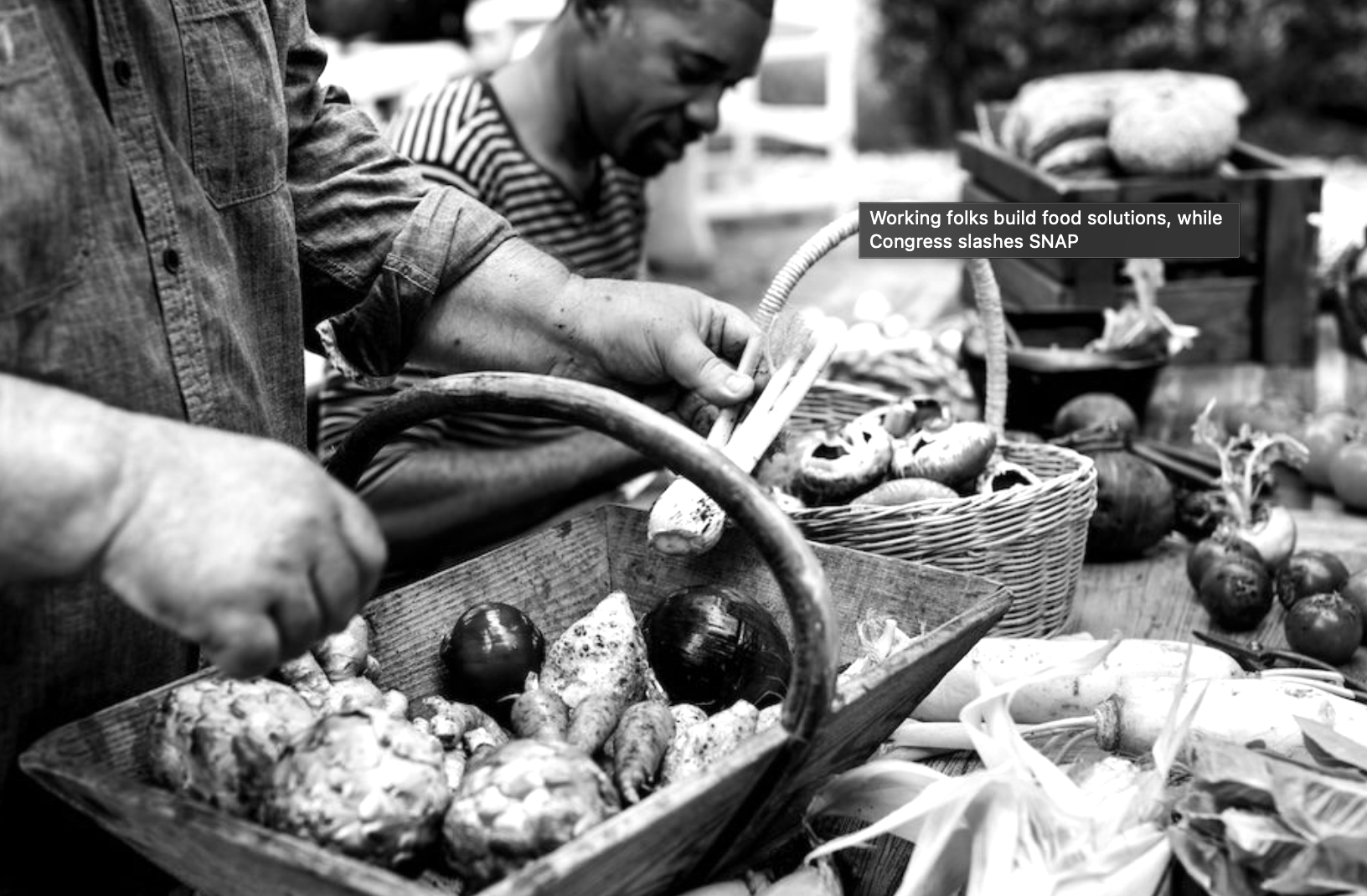
Working folks build food solutions, while Congress slashes SNAP
The Gander
06/16/2025
Shante Woody organizes the market in Greensboro, North Carolina. She’s figured out how to connect the dots between the sellers and the buyers, creating what feels like a small closed-loop economy designed just for us. Selling cakes, pupusas, lemonade, and bean pies, the vendors are working-class people trying to make extra money. Many, Shante says, are bringing their goods to the market directly after getting off work.
The customers are neighborhood people and students from a nearby trade school looking for a quick, no-cook meal or some vegetables for the week. “People can walk over and get something to eat that they can afford while supporting someone who needs the extra help,” Shante explains about the reciprocity.
SNAP is the glue that holds the People’s Market together. Shante says that most of the vendors are SNAP recipients, and are selling at the market to supplement their incomes. The majority of the market customers also use SNAP; in fact, a grant helps the market double the value of what’s on someone’s EBT card when it’s used here. “We have people who only get $8 in food stamps a month, but we can make that go twice as far and they can buy $16 of food at our market,” Shante explains.
This SNAP doubling is done at other markets across the country—a big help for local farmers and vendors, as well as to the families receiving SNAP dollars. But right now, with Congress considering cutting SNAP by $290-$319 billion, that boost to local food economies is at risk.
We’ve long known that the US food system is upside-down. We have a ton of land but use it sparingly for actual food. What food is grown domestically is distributed through a complex system across the country, but still, 38% of what is grown goes to waste (Feeding America, 2024). This complicated system is propped up by incentives and buyback programs for farmers, SNAP funding that helps both families and retailers, and a massive nonprofit food bank system that tries to capture waste and leverage charity to keep a persistent looming crisis in check.
Despite all this, 47 million people are food insecure in our country—a number that has been rising steadily even as grocers make record profits.